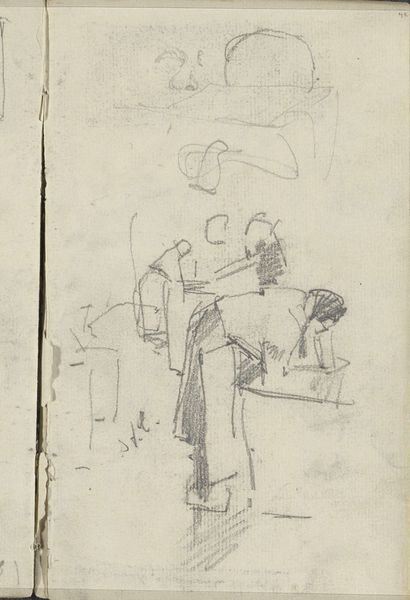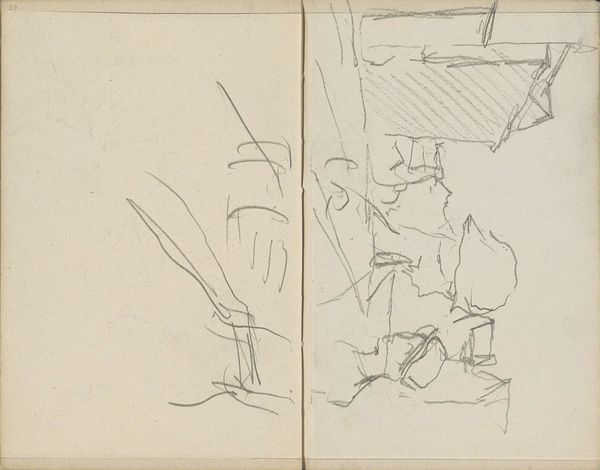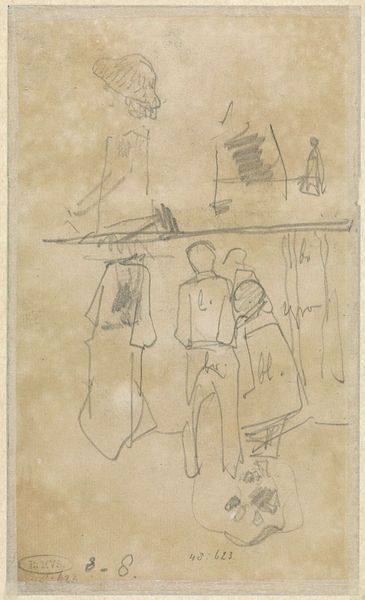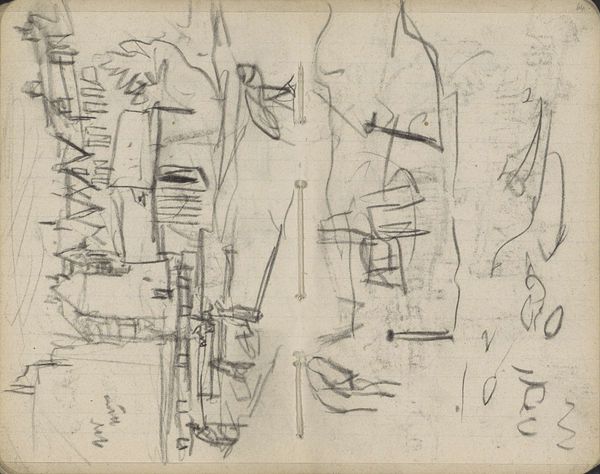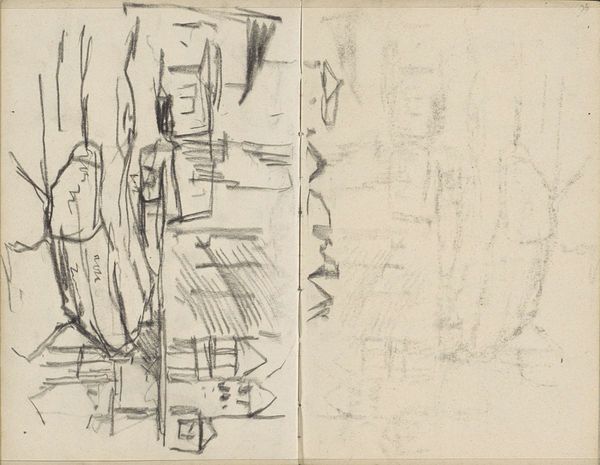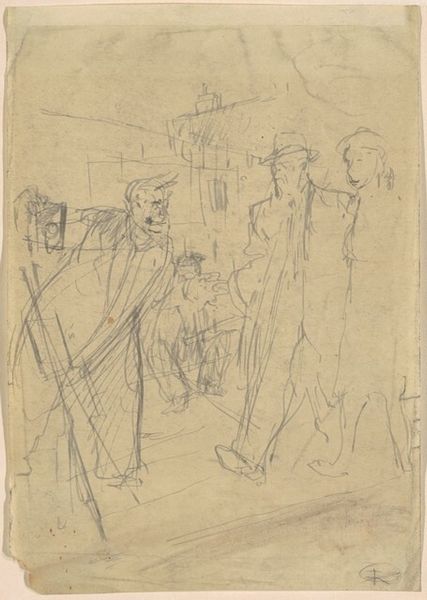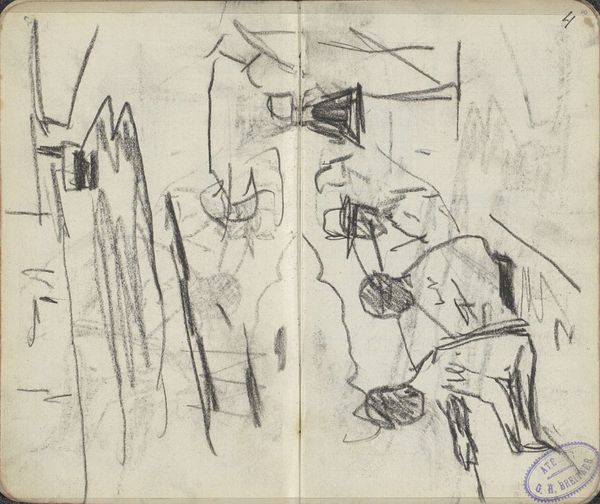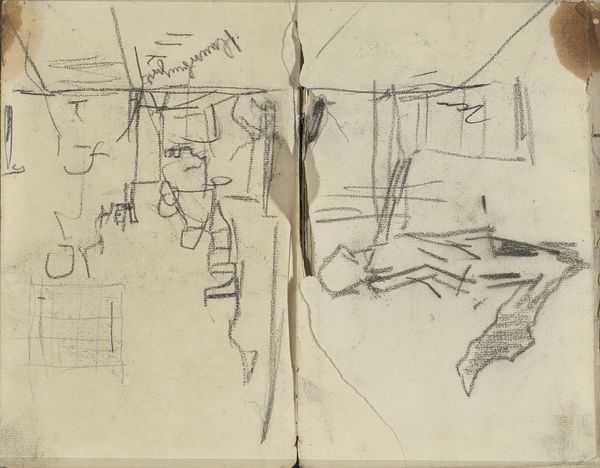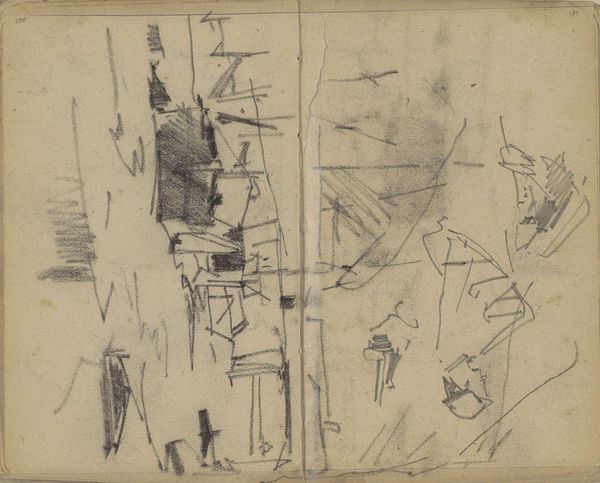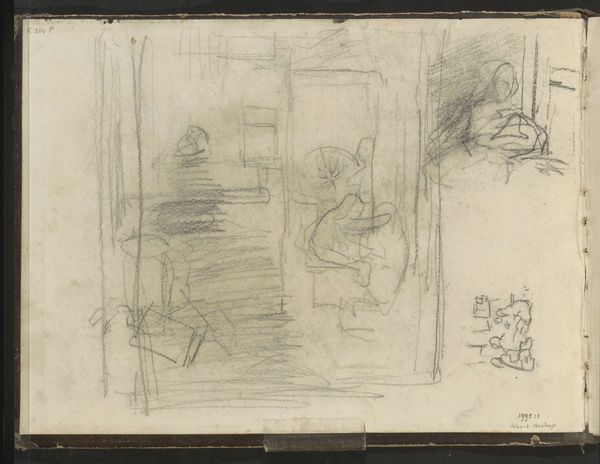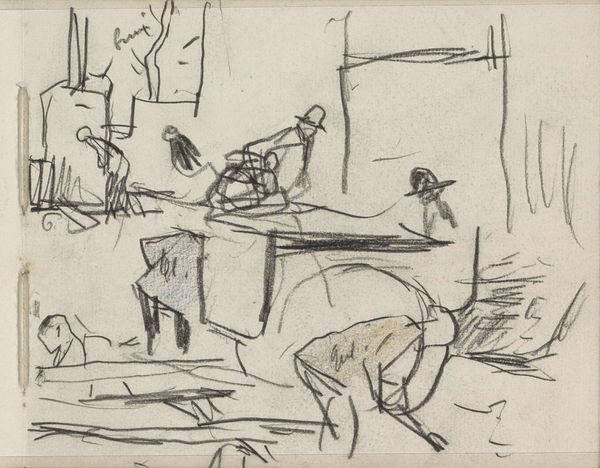
drawing, pencil
#
drawing
#
dutch-golden-age
#
pen sketch
#
sketch book
#
figuration
#
personal sketchbook
#
idea generation sketch
#
sketchwork
#
ink drawing experimentation
#
pen-ink sketch
#
pencil
#
sketchbook drawing
#
storyboard and sketchbook work
#
sketchbook art
#
realism
Copyright: Rijks Museum: Open Domain
Curator: This drawing by George Hendrik Breitner, titled "Figuren aan het werk," was created sometime between 1881 and 1883. It’s currently held here at the Rijksmuseum. It appears to be a page from a sketchbook, a pencil rendering. Editor: My immediate impression is one of provisionality – these aren't finished figures, but rather ghostly suggestions, rapidly captured moments. It speaks to labor, certainly, but there’s an undeniable quiet to it despite the implied action. Curator: Precisely. We're seeing Breitner, ever the recorder of urban life, actively engaging with the process of translating his observations onto paper. The sketchy quality allows us insight into his methodology: the swift strokes of the pencil mapping out forms, exploring weight distribution and spatial relationships. Notice the economical use of line to define volumes. Editor: The medium of drawing itself feels incredibly significant here. The roughness and incompleteness serve as a reminder of the labor often hidden from view—both that of the figures depicted and Breitner's own artistic practice. This act of sketching almost humanizes the industrial process, presenting it not as a monolith but as individual effort. We should also ask: who are these workers, and what is their relationship to the Dutch Golden Age style he is associated with? Curator: I agree. And while seemingly spontaneous, these sketches were instrumental in Breitner's larger, more formal compositions. These sheets were vital for constructing his later paintings. Think of the texture of the paper, the specific graphite pencil he used... All material choices influencing the aesthetic and communicating something crucial about 19th-century artistic training and production. Editor: The positioning of figures also intrigues me, since each is set against what look like very abstracted backgrounds. The very blankness of negative space invites reflection on how power dynamics play out when bodies are seen solely within the context of labor. The almost complete erasure of their individual characteristics is a social and political act too, isn't it? Curator: It's tempting to impose too much intention onto a simple preliminary sketch, but you make a powerful point. Looking at this, I appreciate the immediacy. It emphasizes not just what he depicts but how his hand and materials worked together to explore a subject. Editor: And for me, it deepens the narrative beyond mere documentation; it compels one to contemplate who we see—and often overlook—in our relentless march forward.
Comments
No comments
Be the first to comment and join the conversation on the ultimate creative platform.
